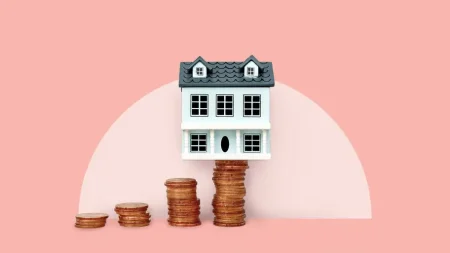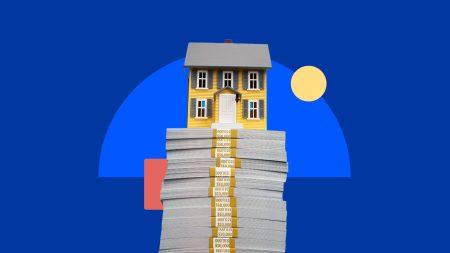Key takeaways
- Several different strategies can help you get out of credit card debt — from payoff plans like the avalanche and snowball methods to consolidation products like balance transfer credit cards and personal loans.
- The best method for paying down your credit card debt depends on your total debt, savings, financial habits and spending preferences.
- If you’re having trouble paying down your debt, don’t hesitate to reach out for professional help, such as from a certified credit counselor.
Many Americans struggle with credit card debt. Nearly half of American cardholders (48 percent) carry a balance from month to month, according to the latest Bankrate Credit Card Debt Survey. And the Federal Reserve Bank of New York reports that national credit card debt is at a whopping $1.18 trillion.
That credit card debt is expensive to carry, with current credit card interest rates hovering above 20 percent.
There may also be a lack of education around credit card debt.
“Oftentimes, people really learn about credit and debt the hard way — usually, when they’re in a situation where they may feel over their head,” says Nicole Gravish Cope, business development officer at Charles Schwab. Cope and her team of financial advisors have met with many debt holders on their repayment journey.
I think [debt] goes across all socioeconomic demographics. People across all walks of life are feeling that financial stress.
— Nicole Gravish Cope, business development officer at Charles Schwab
There’s no quick-fix solution for getting out of debt. However, a combination of these seven payoff strategies can reduce your debt, lower your credit card APR and put you on the right track toward becoming debt-free.
1. Try the avalanche method
This strategy might be good for you if:
You’re motivated by saving money on interest.
The debt avalanche method prioritizes paying off your most expensive debts first. Here are the basic steps:
- List your debts from the highest interest rate to the lowest.
- Continue making the monthly minimum payment on each card so that you don’t hurt your credit score.
- Put any extra cash toward the card with the highest interest.
- Move on to paying off the debt with the next highest interest rate once you repay the first one.
So, if you have a $10,000 balance on a card with a 30 percent APR and $5,000 on a card with a 15 percent APR, you’ll pay off the $10,000 balance first.
Cope explains that choosing a repayment method depends on your behaviors. She says that for people who want to spend the least amount of money on their debt, the avalanche method might be a good choice.
Individuals that might be more analytical in nature tend to prefer and stick to the avalanche method of paying down the highest interest rate first and moving down the line.
— Nicole Gravish Cope, business development officer at Charles Schwab
This can be the most affordable way to get out of debt by saving on interest charges. But if you don’t stick with the method, it won’t save you money.
2. Test the snowball method
This strategy might be good for you if:
You’re motivated by small successes.
With the snowball method, you pay off your debts from smallest to largest. Here are the basic steps:
- List your debts from smallest to largest, regardless of interest rate.
- As with the avalanche method, continue making the minimum monthly payment on each debt.
- Focus your attention on repaying your smallest balance.
- Once you’ve repaid it in full, move on to putting extra money toward the next largest debt.
Getting a debt paid off quickly can motivate you to stay on track.
If the person really wants to see quicker results and see the sheer number of debts that they’re trying to pay down decrease pretty quickly…the snowball method makes perfect sense.
— Nicole Gravish Cope, business development officer at Charles Schwab
In the example of having a $10,000 balance on a card with a 30 percent APR and $5,000 on a card with a 15 percent APR, you’ll tackle the $5,000 balance first with the snowball method.
3. Consider a balance transfer credit card
This strategy might be good for you if:
You’re ready to pay off your debt quickly and save money on interest.
If you have good to excellent credit despite your debt — which is possible if you make minimum monthly payments on time and keep your credit utilization ratio low — you may qualify for a 0 percent intro APR balance transfer offer. The best balance transfer credit cards can help you pause accruing interest while you pay off a balance.
The 0 percent APR introductory offer could last from 12 to 21 months, allowing you to transfer any high-interest balances to the new card. By paying off the balance within the intro period, you can save money on your debt.
Keep in mind:
After the intro period ends, a higher APR will kick in. If you’re still carrying a balance, it will feel like any other credit card debt.
Cope says there are a few things to consider when deciding whether to use a balance transfer card. She asks three questions:
- “Is there any kind of transfer fee?”
- “During that 0 percent APR time frame, can you realistically pay that debt off?”
- “Once that APR readjusts, is it a lower rate than the debt you’re transferring over to it? If it’s higher, you may want to do the cost-benefit analysis on that.”
4. Make a budget
This strategy might be good for you if:
You’re not sure where your money’s going.
Sometimes people get into credit card debt due to unexpected medical, emergency expenses or high inflation costs. Other times, it’s from overspending or even doom spending — when you impulsively make purchases to cope with stress.
Cope shares that her clients often don’t know where to begin with budgeting.
If you don’t have a solid foundation of budgeting, managing the credit and the debt becomes very difficult. We see…some trepidation on how to do that and where to begin.
— Nicole Gravish Cope, business development officer at Charles Schwab
To create a budget, start by listing your income and expenses and seeing what’s left over. Making a budget can help you track where your money is going and how much you’re spending in different categories. You can also include debt repayment in your budget — ideally, you’d repay your debt first before making discretionary purchases like meals out, new clothes or concerts.
Cope recommends the 50/30/20 budgeting strategy.
“Think about your needs — rent, mortgage, utilities, food — that you need to survive, that keep the roof over your head and food on the table. So, 50 percent of your budget should really be allocated toward that,” she says.
She continues: “30 percent can go to those wants — the restaurants out, the entertainment plans, the streaming services — that make life a little bit more enjoyable. And then 20 percent should be going to savings and [debt repayment].”
5. Start earning more income
This strategy might be good for you if:
You don’t have enough income to cover your expenses and debt repayment.
If you’ve made a budget that includes both necessary expenses and debt repayment but still find yourself in the red, it might be time to earn additional income. You can try to make more money at your current job by picking up extra hours or asking for a raise. Or you can start earning money outside your regular job with a side hustle.
More than 1 in 3 Americans (36 percent) have a side hustle, according to Bankrate’s 2024 Side Hustles Survey. Further, 1 in 5 of those side hustlers (20 percent) use it to pay down debt.
Considering what skills and resources are available to you, ask yourself these questions:
- Do you already have experience with a task that you could charge for?
- Do you have free time on the weekends?
- What opportunities exist within your network?
Factoring this extra income into your budget can help you pay off your debt more consistently.
6. Switch to cash
This strategy might be good for you if:
You’re looking for ways to limit your credit card usage.
If your main goal is to pay off your credit card debt, the last thing you want to do is add to that debt by continuing to overcharge expenses to your card.
Paying with cash not only prevents you from accumulating more debt, but it can also help you spend less overall. Handing over dollar bills can feel more tangible than swiping a card. And once the cash is gone, it’s gone — so you have to plan accordingly.
7. Explore debt consolidation loans
This strategy might be good for you if:
You have too many credit card accounts and find it hard to stay on top of payments.
Debt consolidation lets you combine multiple high-interest credit card balances under a loan with one fixed, monthly payment. You could take out a debt consolidation loan or, if you’re a homeowner, a home equity loan.
Debt consolidation can make it easier and less expensive to pay off debt, but only if the interest rate is lower than the interest rates of your credit cards. And if you make the loan’s monthly payments on time and in full, you might also boost your credit score.
How much can you save?
Use Bankrate’s debt consolidation calculator to see how much money you could save on interest.
The bottom line
With a budget in place and repayment tools in your pocket, credit card debt becomes more manageable. With time and hard work, you can chip away at your balance and reap benefits like saving on interest and boosting your credit score. But, if you find yourself having trouble implementing these strategies on your own, don’t worry. Working with a financial professional, such as a certified credit counselor from a nonprofit, can help you get on track and start managing your debt successfully.
Frequently asked questions about paying off credit card debt?
Read the full article here









